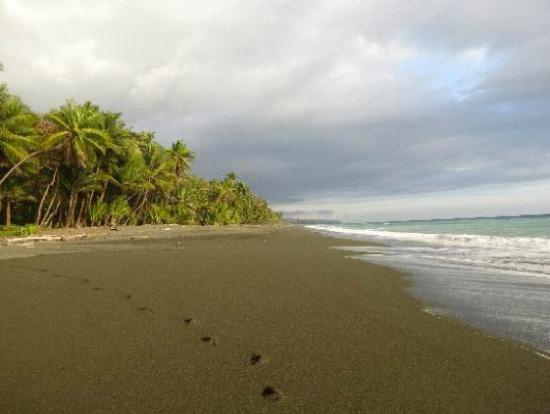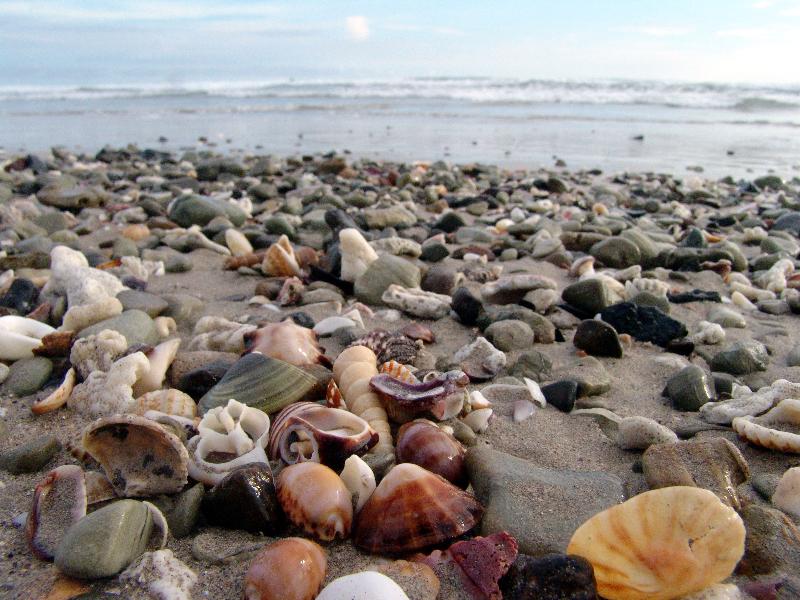Costa Rica Travel – Today, Costa Rica is one of the most frequented Central American countries. It has become the go-to location for expats and retirees thanks to cheap living, friendly locals and amazing beaches.
However, this was not always the case and before touring Costa Rica became mainstream, most areas that lay outside the Central Valley was considered off the beaten path. Once tourism picked up though, a lot of the local villages and other pristine wonders in the beautiful nation became tourist attraction sites resulting in hotels cropping up in areas like Puerto Viejo, Monteverde, Tamarindo, Quepos, La Fortuna, Arenal, Manuel Antonio, Jaco and others. Away from the popular sites and areas though lie hidden treasures. When visiting these places, have gas in your tank and water in your bottle before you find yourself in an unexpected Survivor challenge.
Carate Beach in Osa Peninsula is one such place. The Osa Peninsula is where the road ends, literally, and civilization becomes a tale from this point. During the years of agricultural expansion, this was one of the last places to be explored and half of it was not even touched.
As a result it remained untainted and virtually virgin land with the wildlife present being protected through legally protected areas like Corcovado National Park among others.
 The Carate Beach which is a tiny area of Osa has vibrant nature and wildlife in abundance. The area boasts of having all the four local species of monkeys in one tree, the most intense place, biologically, on the face of the earth, the tallest tree in the beautiful Costa Rica, gold in abundance as well as an overflow of Scarlet macaws. Luna Lodge and La Leona, which are two of the most sustainable eco lodges in all of Costa Rica, are also found in Carate. There is a landing strip in Carate and the road is designed for 4 X 4 vehicles. This part of Costa Rica provides beautiful beaches, plenty of giant trees and amazing wildlife and serenity not to be missed out on.
The Carate Beach which is a tiny area of Osa has vibrant nature and wildlife in abundance. The area boasts of having all the four local species of monkeys in one tree, the most intense place, biologically, on the face of the earth, the tallest tree in the beautiful Costa Rica, gold in abundance as well as an overflow of Scarlet macaws. Luna Lodge and La Leona, which are two of the most sustainable eco lodges in all of Costa Rica, are also found in Carate. There is a landing strip in Carate and the road is designed for 4 X 4 vehicles. This part of Costa Rica provides beautiful beaches, plenty of giant trees and amazing wildlife and serenity not to be missed out on.
Another off the beaten path spot to visit is the secret gem of Costa Rica, Cabo Blanco Absolute Reserve. This place is in relatively close proximity to Montezuma, Cabuya, and Santa Teresa and Malpais beaches. The remote reserve offers its visitors a 5-hour long chockfull of wildlife which could easily feel like a hike for those who haven’t hit the gym in a while. The path leads through both tropic dry and tropical humid forests that continuously transition back and forth. The things to look out for while on the path are howler monkeys, white face capuchin, wild turkeys, agouti deer and long nosed coati.
At the end of the trail visitors are treated to a spectacular white pebbled beach and salty teal-colored ocean water that makes floating effortless and provides an amazing sense of buoyancy. The Cabo Blanco Beach, meaning ‘white point’ brings a little bit of heaven down to its visitors. After a relaxing swim you can take a walk to Cabuya, a tiny beach village that has a fichus tree that is enormous and provides the perfect photo op.
Off the previous two spots Pacuare River holds the most excitement and an adrenalin rush that will satisfy even the biggest adrenalin rush junkies. There are over three hours of nothing but non-stop rapids, birds flying overhead, jungle covered canyons and waterfalls as well as indigenous homes all of which provide a breathtaking backdrop for the pure unadulterated fun. The river runs for about 68 miles and the stunning scenery surrounding this quintessential tropical river is absolutely to die for.
The rapids go all the way to class V for an intense challenge to the experienced and overnight rafting options let visitors enjoy high end lodges like Pacuare Lodge or more affordable eco lodges like the Rios Tropicales. The Pacuare is a site for World Rafting Championship, is lined with breathtaking landscape and scenic waterfalls and since the water is not glacier melt it is not that cold. You can raft your heart out with the overnight or full day rafting and get to enjoy the tasty burritos when you are done.
From Tourism Review

